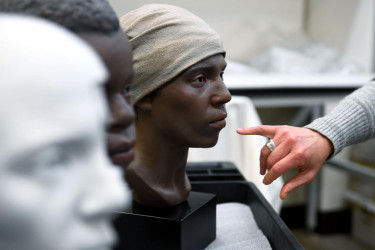Collection
Recovering the Black Past through African American Cemeteries
Issues surrounding historic preservation efforts and memorialization of Black history.
THEMATIC CONTEXT: Broader concerns about representation and inheritance (of land and responsibility of maintenance), related to the movement for African American graves-protection efforts nationwide (including the East End Cemetery as well as sites in New Hampshire, New York, Pennsylvania, and North Carolina).
THEMATIC CONTEXT: Awareness of Black burial grounds has increased at the same time as discussions about Confederate monuments have captured national attention. They are two parts of a larger reckoning with our monumental landscape, what has been commemorated in stone and what hasn't, and how that has shaped our historical memory of the Civil War.
CONTRASTING SITE: While many African American burial sites were spaces that served communities, others, ike the mass graves of prisoners forced to labor for the Imperial Sugar company in Sugar Land, Texas, under the convict leasing system, are sites of exploitation. How are the imperatives for preservation and commemoration of such sites similar or different?








